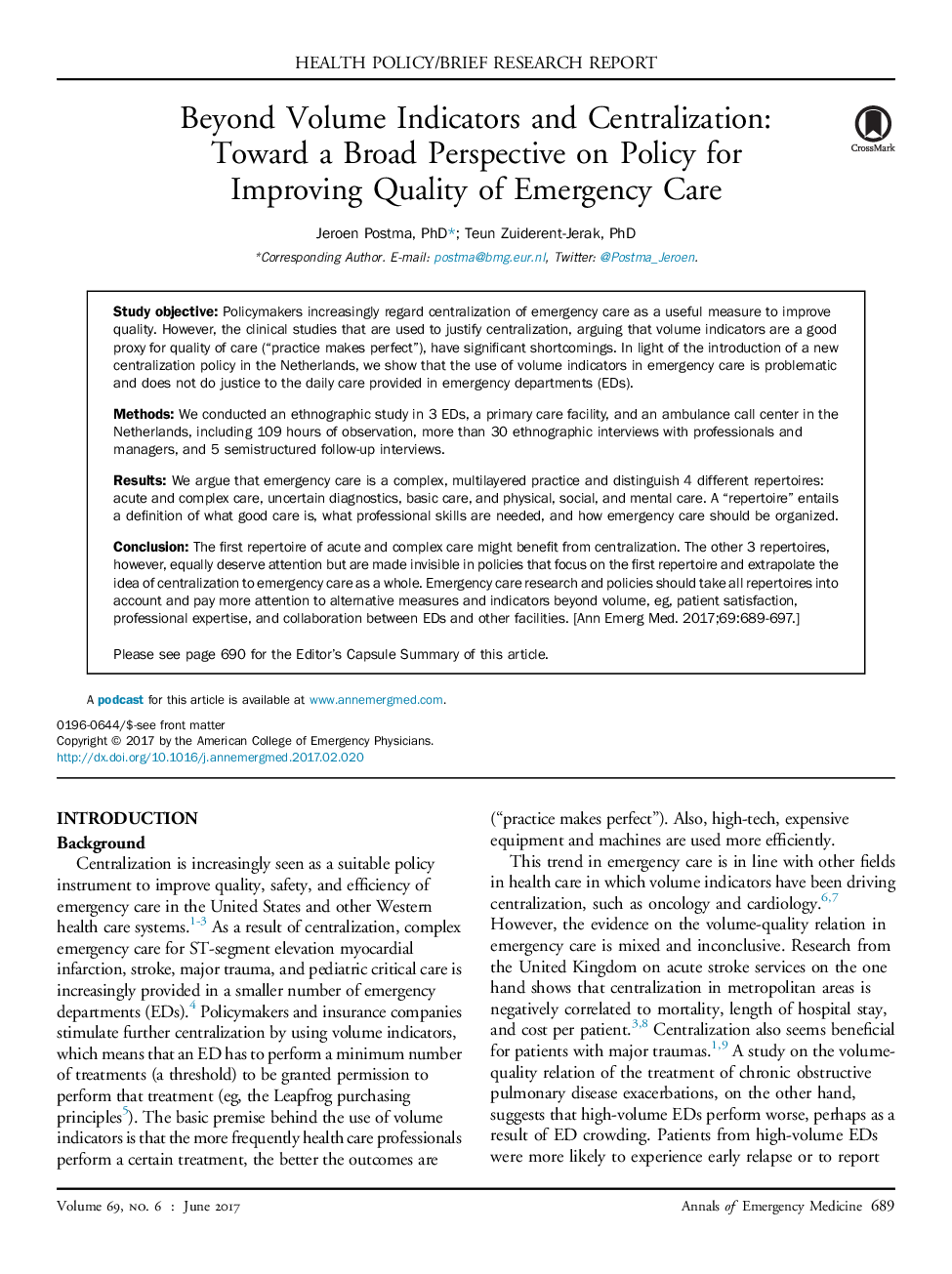| Article ID | Journal | Published Year | Pages | File Type |
|---|---|---|---|---|
| 5651573 | Annals of Emergency Medicine | 2017 | 10 Pages |
Study objectivePolicymakers increasingly regard centralization of emergency care as a useful measure to improve quality. However, the clinical studies that are used to justify centralization, arguing that volume indicators are a good proxy for quality of care (“practice makes perfect”), have significant shortcomings. In light of the introduction of a new centralization policy in the Netherlands, we show that the use of volume indicators in emergency care is problematic and does not do justice to the daily care provided in emergency departments (EDs).MethodsWe conducted an ethnographic study in 3 EDs, a primary care facility, and an ambulance call center in the Netherlands, including 109 hours of observation, more than 30 ethnographic interviews with professionals and managers, and 5 semistructured follow-up interviews.ResultsWe argue that emergency care is a complex, multilayered practice and distinguish 4 different repertoires: acute and complex care, uncertain diagnostics, basic care, and physical, social, and mental care. A “repertoire” entails a definition of what good care is, what professional skills are needed, and how emergency care should be organized.ConclusionThe first repertoire of acute and complex care might benefit from centralization. The other 3 repertoires, however, equally deserve attention but are made invisible in policies that focus on the first repertoire and extrapolate the idea of centralization to emergency care as a whole. Emergency care research and policies should take all repertoires into account and pay more attention to alternative measures and indicators beyond volume, eg, patient satisfaction, professional expertise, and collaboration between EDs and other facilities.
